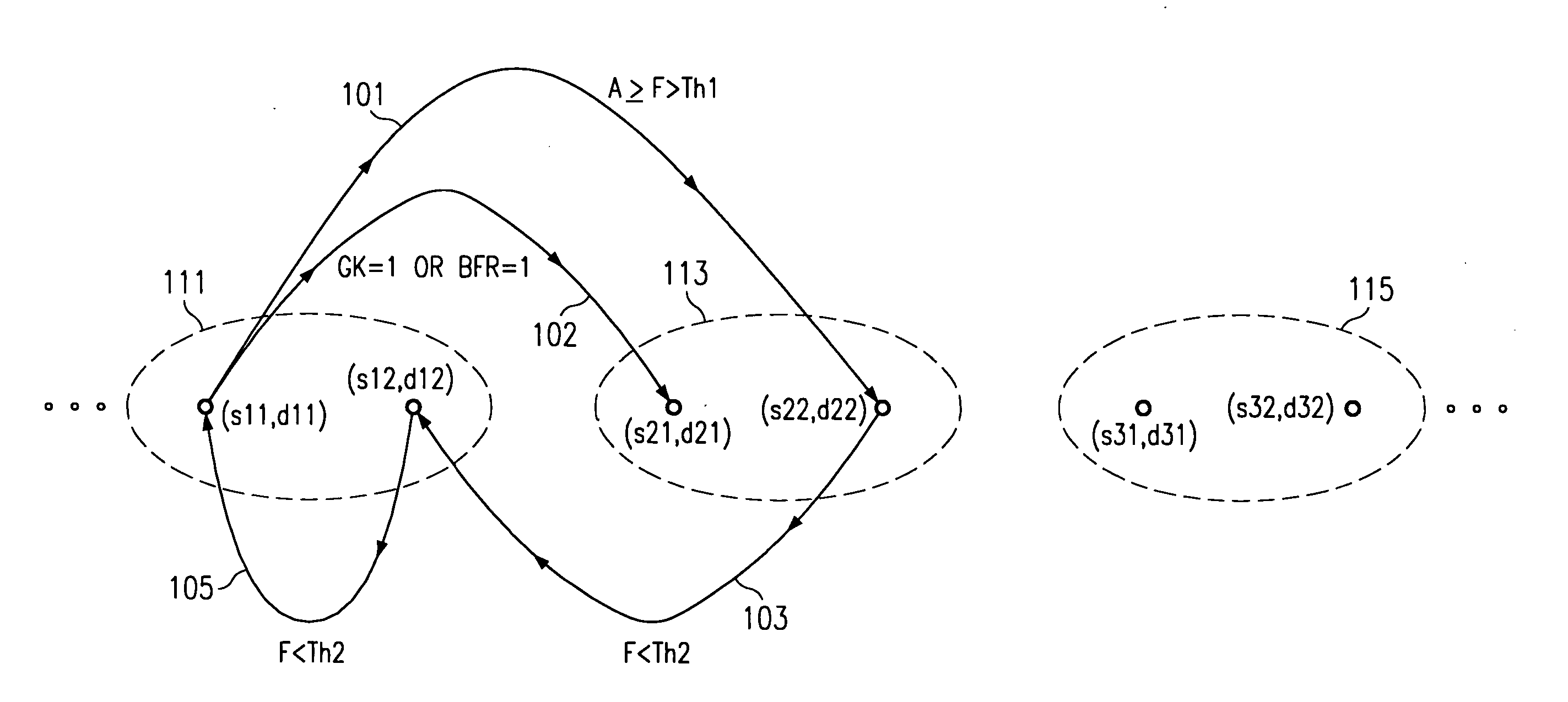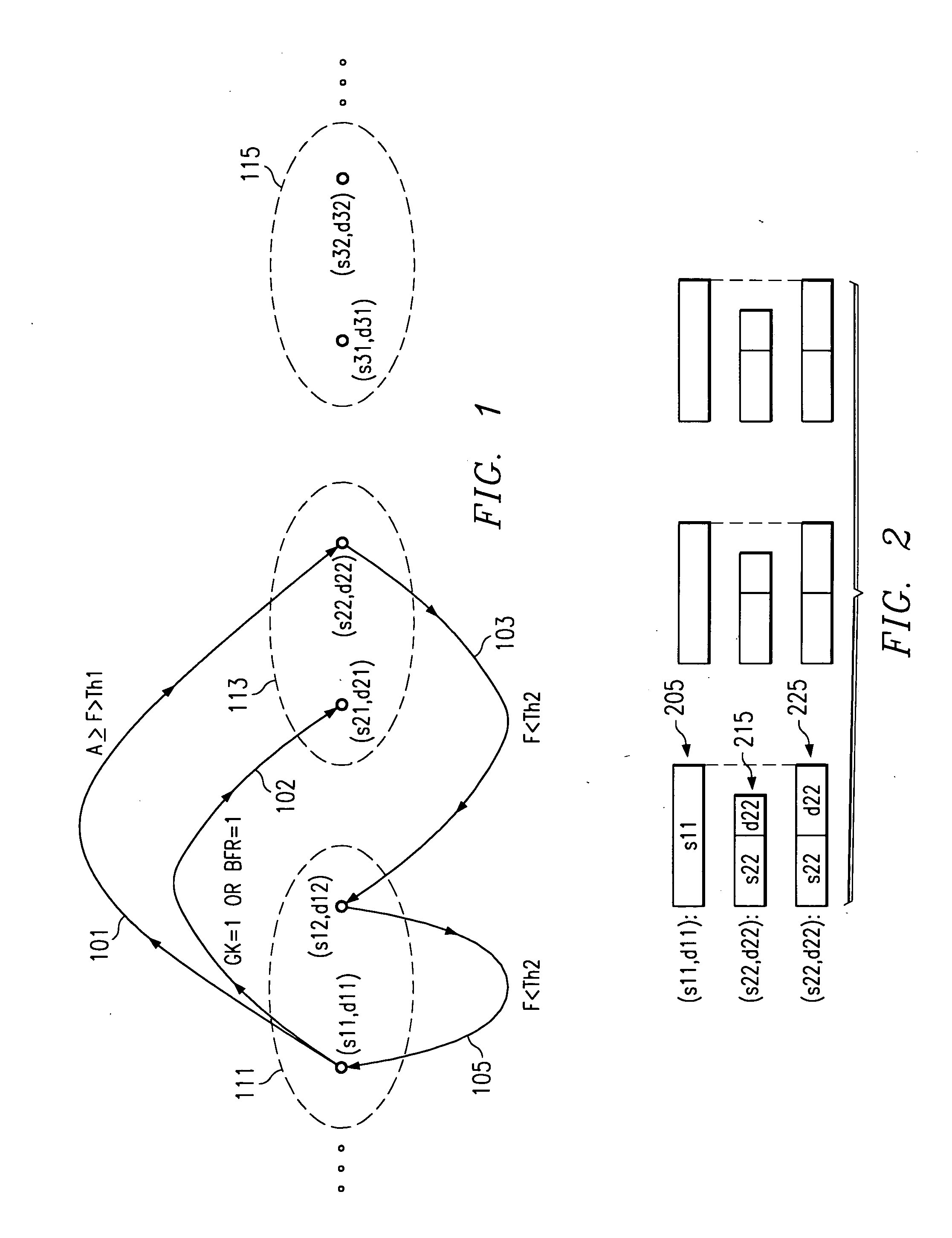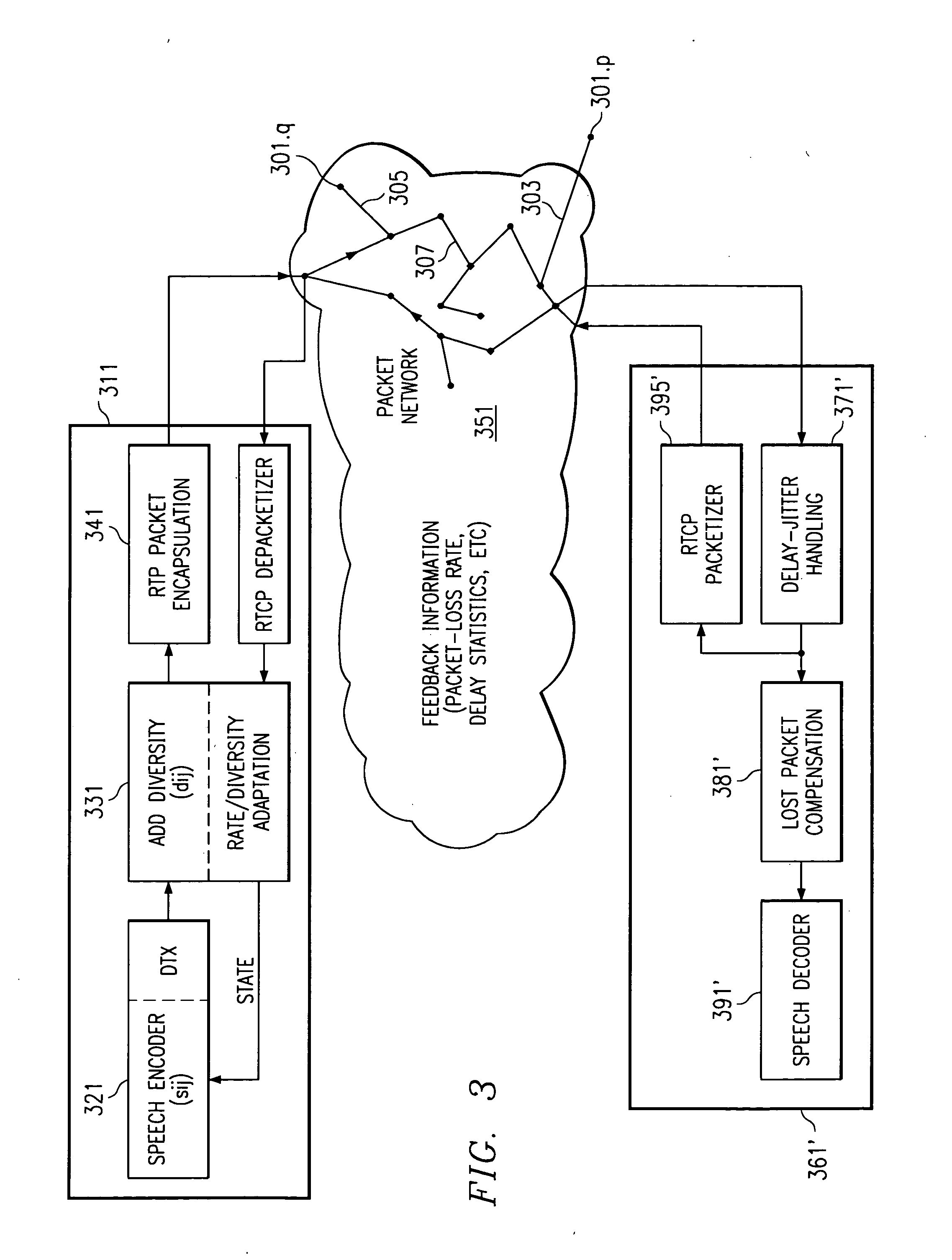Systems, processes and integrated circuits for rate and/or diversity adaptation for packet communications
a packet communication and integrated circuit technology, applied in the field of integrated circuits, systems and processes for packet communication, can solve problems such as delay jitter, packet loss, and packets that may even be lost and never reach their destination
- Summary
- Abstract
- Description
- Claims
- Application Information
AI Technical Summary
Benefits of technology
Problems solved by technology
Method used
Image
Examples
embodiment 1 (
(In embodiment 1(b), the packet stream of Path 2 is time-delayed relative to the packet stream of Path 1.)
[0097] 2. Path switching diversity randomizes bursty packet losses without increasing bandwidth utilization. First create multiple connections / paths (e.g. 2 connections) between the source and the destination. Then transmit as follows:
[0098] VOP packet stream: P0 P1 P2 . . . P(n−1) P(n) P(n+1) P(n+2). . .
Path 1:P0P2P(2n)Path 2:P1P3P(2n + 1)
[0099] Generally speaking, a set of n respective packets are directed into a corresponding number n of respective diverse network paths whereupon the process repeats for the next set of n packets, and so on.
[0100] 3. Combined path-switching diversity / redundancy embodiments combine path-switching diversity and redundancy processes, and advantageously achieve good voice quality with efficient bandwidth utilization. In a two-path embodiment
Path 1:P0P2 P1′P4 P3′ . . .Path 2:P1 P0′P3 P2′ . . .
[0101] In this approach, n respective redundancy p...
PUM
 Login to View More
Login to View More Abstract
Description
Claims
Application Information
 Login to View More
Login to View More - R&D
- Intellectual Property
- Life Sciences
- Materials
- Tech Scout
- Unparalleled Data Quality
- Higher Quality Content
- 60% Fewer Hallucinations
Browse by: Latest US Patents, China's latest patents, Technical Efficacy Thesaurus, Application Domain, Technology Topic, Popular Technical Reports.
© 2025 PatSnap. All rights reserved.Legal|Privacy policy|Modern Slavery Act Transparency Statement|Sitemap|About US| Contact US: help@patsnap.com



